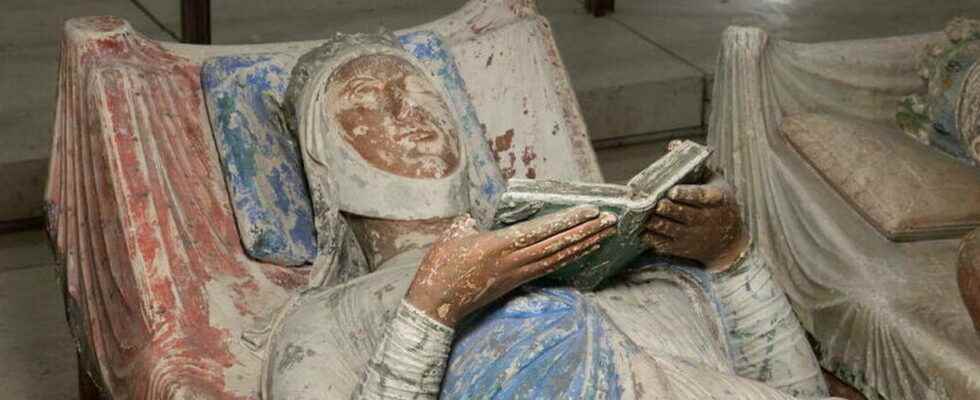En 1154, Eleanor of Aquitaine was in her thirties when she prepared to become Queen of England. She already displays a flamboyant destiny: pampered heiress, Duchess of Aquitaine at fourteen, then Queen of France alongside Louis VII, she ended up breaking with her prestigious but boring husband to marry the fiery Henri II Plantagenêt, Duke of Normandy. , ten years his junior. A loving and diplomatic volte-face which triggered an immediate war on the borders, the King of France enraged to see Aquitaine escape him.
And now his life is rocking again alongside the Plantagenet, who fought hard to have his rights to the English crown recognized through his mother, Mathilde the Emperor. After a military expedition to England, King Stephen finally gave in and recognized him as heir in 1153. A year later, Stephen died, the march to the throne finally began, the ambitious Eleanor was to wear a new crown on his head. And have no doubt that his legend is being forged…
Our series on The great coronations at Westminster
Scared to death over William the Conqueror
The Triumph of Eleanor of Aquitaine
Queen Victoria’s Big Mess
Elizabeth II’s communications operation
The couple had to wait a good month before crossing the Channel in December 1154 and then taking the road to London. The English are worried, they know of Henry’s shady reputation, but they are also reassured to see peace settling in the kingdom. From everywhere, the crowd rushes, people come to stare at the new king and especially his wife, who has already been queen of the largest country in Christianity, has been on the crusades and owns a lot of land in the south of France. A woman with a fiery temperament, literate, refined and who, it is said, lives in unprecedented luxury…
power and glory
Several chroniclers attest to his presence in Westminster on this day of December 19, 1154. The abbey is away from London, on the banks of the Thames, it has been the place of coronations for a century and adjoins the royal palace, where resides and governs the sovereign when he is in the capital. We had to act quickly, Henry II was certainly in a hurry to establish his authority, but we can assume that Aliénor wanted to give the coronation of her husband all the brilliance it deserved – after all, the couple is one of the richest and most powerful of this Europe of the twelfthe century, with a veritable empire that includes England, South Wales, part of Ireland, the Duchy of Normandy, the counties of Anjou and Maine, not forgetting Aquitaine…
The splendor deployed obeys immutable rules: an impressive procession, with richly dressed standards and heralds, sparkling trumpets, bells ringing at full speed and streets decorated with hangings, while the cheers of the crowd welcome the new sovereigns… whether or not Eleanor was crowned during the ceremony is not known, but her position was no doubt officially recognized by a brief ceremony. She stands there, in the front row, triumphant, before the barons and counts from the provinces of France and England, and wears a crown, no doubt chosen from the royal treasury.
READ ALSOHow France was born from a hell of a poker game
While the hundreds of candles sparkle the silk and the jewels of the assembled court, she sees her husband Henri advancing in front of the altar, where the Archbishop of Canterbury, Thibaut du Bec, is standing. He bends the knee, lays a hand on the Bible and takes an oath before barons and clerics, undertakes to uphold justice, support his subjects and respect God and his ministers – which will not prevent him, however, to be implicated in the murder of Thomas Becket a few years later. Here he is getting up for the anointing rite, then he receives the royal tunic of gold brocade, the dalmatic, the sword and the gold spurs, insignia of the knight, then the archbishop finally places the crown on his head and gives him the scepter, symbol of authority, and the orb, which recalls his temporal and spiritual power on earth. The new sovereign then joins his throne to receive homage.
Duels and minstrels
We do not know the details of the festivities that surrounded the ceremony. But Henri and Eleanor have undoubtedly reached the great hall of the Palace of Westminster, where the coronation banquets are usually held. They left their grand ceremonial outfits for lighter garments, a silk tunic for him, a robe trimmed with sable for her, with golden diadems on their heads. As historian Philippe Delorme suggests in his biography Eleanor of Aquitaine (Pygmalion), the party would largely resemble those described by Master Wace in his Roman de Brut, where he describes the coronation of Arthur and Guinevere: tournaments and duels of knights as well as jugglers, singers, poets and musicians. “You could have heard lyre players, tambourines, chalumeaux, symphonies, psalteries, monochords, cymbals and string zithers…”
Eleanor was still to experience many ups and downs in her life: prosperous days, such as the birth of her children and the accession to the throne of her son Richard the Lionheart, and dark hours such as the conflicts which would oppose her to her tempestuous husband. At over 75 years old, she was still criss-crossing her lands in Aquitaine to consolidate her duchy! The queen with three crowns will die in France, at the venerable age of 82… and will be buried in the abbey of Fontevraud.
To read : Eleanor of Aquitaine, by Philippe Delorme, Pygmalion editions.
